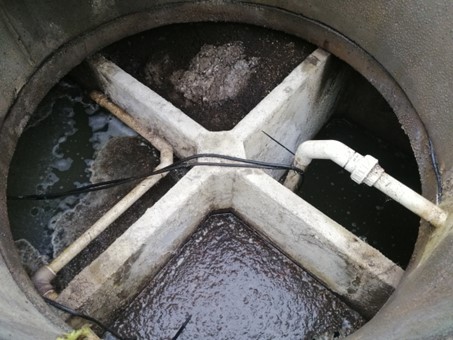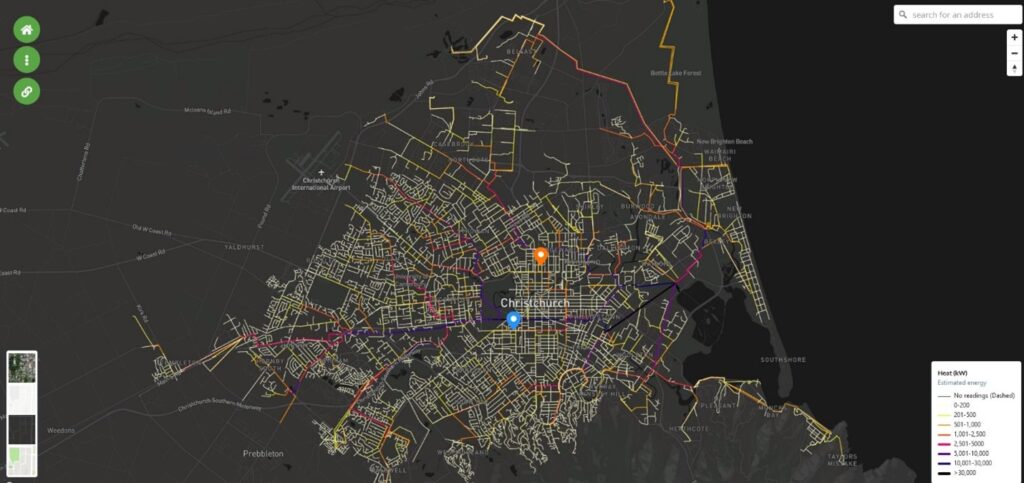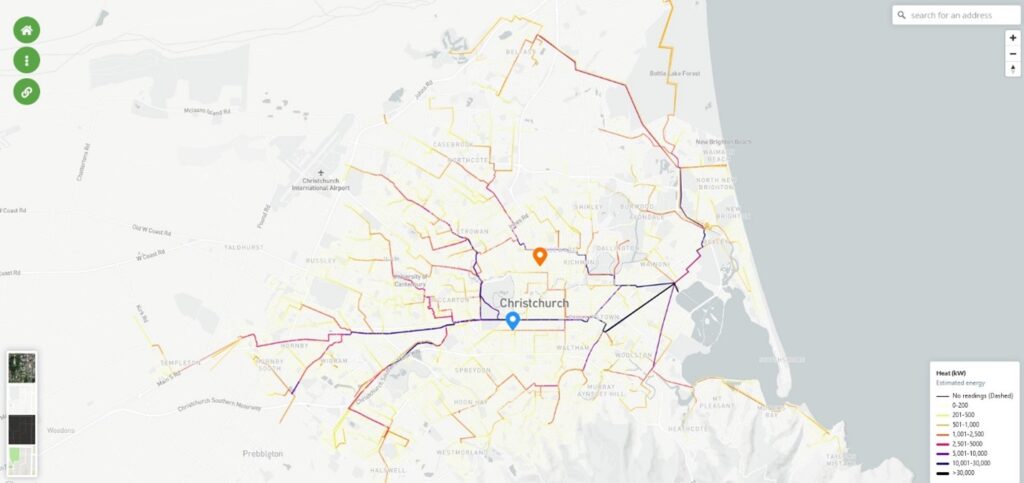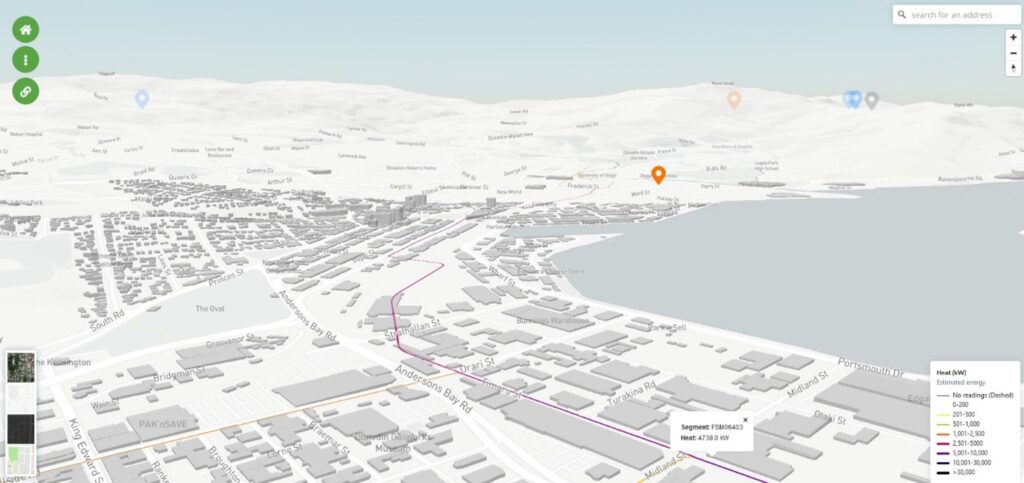
Highlighting the Latest International Plumbing Research from New Zealand: Onsite Wastewater & Wastewater Heat Energy
Spotlighting the cutting-edge research and innovation unfolding in New Zealand regarding groundwater studies and water recycling and wastewater energy recovery.
As a global leader in the plumbing industry, the International Code Council has the privilege of collaborating with several international universities, academic institutions and research partners. With so many organizations making significant contributions to plumbing knowledge worldwide, staying updated with the latest research and academic findings can be challenging.
Through the Code Council’s PMG Newsletter, we aim to spotlight these outstanding contributions from various regions, showcasing one country at a time.
Here we spotlight the cutting-edge research and innovation unfolding in New Zealand. We begin with Bronwyn Humphries, a senior groundwater scientist at the Institute for Environmental Science & Research, whose work is at the forefront of groundwater studies. Following this, we explore emerging technologies with Nick Meeten, a consultant specializing in water recycling and wastewater energy recovery.
This research focuses on areas of importance to the International Code Council with the development of the new global standard ICC 825.
Onsite Wastewater Research in New Zealand
It is estimated that approximately 20 percent of New Zealand’s population, just over 5 million, rely on onsite wastewater. The most common type of systems used in New Zealand for single households are simple primary treatment systems with effluent discharging to a pit or shallow trench. A smaller proportion of onsite wastewater systems use secondary treatment, predominantly using aeration technology to achieve a higher level of treatment before discharge (Figure 1).

If these systems aren’t looked after properly there can be serious consequences. Faulty systems can contaminate the land within a property or even the drinking water supplies of a whole community (Figure 2).

When protecting environmental and public health from onsite wastewater, homeowner education regarding operation and maintenance is key, alongside science research that informs planning and policy decisions.
New Zealand is in a unique situation due to gaps in our regional records resulting in us not fully understanding where all our onsite wastewater systems are, particularly those older systems. We also don’t completely understand what impact these systems are having on the quality of our groundwater, which is the drinking water source for 40 percent of the population. In addition, we haven’t yet fully utilized emerging wastewater treatment technologies to improve effluent quality.
ESR’s current onsite wastewater research efforts are seeking to plug these gaps by addressing four main research areas:
- Location Estimation: Data scientists are working alongside regional authorities in New Zealand to locate those onsite wastewater systems that were previously unknown. The process involves utilizing local spatial datasets (i.e. reticulated wastewater networks, building outlines) and estimating where onsite wastewater systems may be present. This intelligence helps decision-makers in their planning and policy decisions, particularly protecting drinking water sources.
- Wastewater Quality: Research is underway to examine how microbial and chemical contaminants from wastewater treatment systems are transported into the environment. This investigation focuses on the efficacy of microbially driven wastewater treatment systems for optimising removal of these contaminants. Currently, scientists have sampled onsite wastewater systems of varying designs, treatment, ages and household occupancies to determine the microbial and chemical composition of onsite wastewater within a New Zealand context and an investigation of the presence and upregulation of antimicrobial resistance genes has been undertaken. In addition, the concentration of Emerging Organic Contaminants (EOCs) and Per- and Polyfluoroalkyl Substances (PFAS) within onsite wastewater are also being investigated. Preliminary results indicate that the quality of onsite wastewater entering the environment is of poorer quality than what was previously assumed and there is an increase in antimicrobial resistant genes (inferring resistance in microbes present).
- Groundwater Quality: A new onsite wastewater research facility has been established in New Zealand, which provides monitoring of ‘toilet to tap’ monitoring configurations for domestic onsite wastewater systems. Scientists can monitor chemical, bacterial and viral tracers as they enter the onsite wastewater system through the toilet and monitor the rate and transport through the treatment plant, land disposal and ultimately downgradient groundwater.
- Climate Change: At the onsite wastewater research facility, researchers are investigating how fluctuating groundwater levels due to climate change may impact groundwater quality. Within a New Zealand context, prolonged dry periods followed by heavy rainfall events can cause wastewater to rapidly infiltrate groundwater, which significantly increases the risk to groundwater sourced drinking water supplies.
Maintenance is Key
Regardless of whether an onsite wastewater system is new or old, keeping it well-maintained will help ensure any problems are caught early. Signs of potential problems could include water presenting at the surface and offensive odors such as a strong ammonia or sewage-type smell.
It all comes down to the property owner’s care and knowledge. The use of bleach or antimicrobial cleaning products with sanitary plumbing fixtures is a big no-no, as it kills off the ‘good’ microbes that help to break down the wastewater sludge. You should only flush the three “Ps”: Pee, Poo and Paper. Other items can cause blockages and added maintenance costs. Wet wipes and sanitary items should always be put in the rubbish.
If systems are not properly maintained, you could risk families becoming sick, and/or cause a community contamination event, such as if wastewater from a property contaminates a downgradient drinking water well. A lack of maintenance could also cause the system to fail to the point where a complete renewal is required.
Enteric (occurring in the intestines) illnesses stemming from drinking water supplies that are contaminated by wastewater can include norovirus, which may leave you unwell for several weeks. Longer illnesses are also possible, due to pathogenic organisms like Cryptosporidium and Giardia.
The cost to people’s health along with negative financial implications could be very significant if things go wrong. It is important to encourage anyone who’s been putting off any maintenance of their on-site wastewater management systems, to act now.
Key Tips for Managing Onsite Wastewater
- Newer secondary treatment systems require regular inspection and maintenance at least every 12 months, including sludge removal every three years. Older primary treatment systems (septic tanks) while not requiring an inspection still need to have sludge pumped out around once every three years.
- Support the microbial community living in your onsite wastewater system by using low-phosphorous soaps and detergents. Be sure not to flush solids, such as plastics and wet wipes, or aggressive chemicals, such as bleach and caustic soda.
- Try and space out water use to avoid overloading the system – e.g. not running your washing machine and dishwasher at the same time.
- If you notice an issue – like a sewage overflow, murky or smelly puddles around your treatment system, or even a broken tank lid – you should get your system inspected immediately by a qualified technician.
- Before purchasing property with an onsite wastewater treatment system, check with a lawyer or estate agent whether the system is consented to by a local authority, and how it’s been maintained.
Mapping and Recycling Wastewater Heat Energy
Utilizing wastewater for heating and cooling buildings presents a thrilling opportunity for cities to significantly cut fossil fuel use and carbon emissions. This approach also helps conserve valuable drinking water, enhance air quality, reduce noise pollution and achieve these benefits swiftly.
Globally, approximately three times more energy is used for heating and cooling than is used for electricity. A survey by Thames Water customers has shown that 72 percent support wastewater district heating after hearing what it means for them and their community.
Wastewater heat recycling is achieved by simply using existing infrastructure and energy that cities already have by using them in a different way. This technology is not new. Europe and Japan started using wastewater for heating and cooling buildings in the 1980s and there are now estimated to be more than 1000 wastewater heat recycling systems in operation around the world.
Benefits of Wastewater Network Heat Mapping
Typically, twenty to thirty percent of a home’s energy is used to heat water, and this water mostly flows ‘down the drain’ after use, carrying all this heat energy with it.
Wastewater networks are collection systems for all the wastewater that citizens send ‘down their drains’ every day. Wastewater networks have heat available from these discharges, but typically the energy is just flushed away. Many buildings and industries can use this heating and cooling energy but often don’t know where or how much wastewater is available within the network, and many people don’t know about wastewater heat recycling technologies.

To significantly improve sustainable cities, there is a need to recycle this massive amount of heat energy available in the wastewater network via heat pumps, rather than use fossil fuels to generate heat. Not to mention that there is potential for wastewater utilities to sell the heat and generate new revenue from something that is currently being flushed away.
Internationally, the amount of energy used in the home to heat water can equate to approximately:
- USA – 20%
- UK – 20%
- EU (average) – 20%
- China – 25%
- New Zealand – 30%
- Australia – 30%
For planning purposes, a wastewater network heat map provides valuable insights for heat recycling projects as they provide project stakeholders with the ability to easily identify potential wastewater heat sources. This tool bridges the information gap between wastewater authorities and heat users, facilitating the effective recycling of heat energy and fostering collaboration among project stakeholders.
How is Wastewater Heat Energy Used?
Heat pumps are used to harness the thermal energy available within wastewater. Heat pumps are incredibly efficient and use only a small amount of electricity to move a much larger amount of thermal energy (i.e. heat) from one place to another.
Heat pumps come in many different designs and a common term used to describe them is what the heat pump is taking heat from , and what the heat pump is delivering heat to . A common type, used in many residential homes is an air-to-air heat pump. But there are also other types such as air-to-water, water-to-air and water-to-water.
In water-to-water heat pumps, the first ‘water’ (i.e. where the heat is being taken from) can be ground water, sea water, river water, lake water, geothermal and wastewater. The second water is the water that is intended to be heated, such as heated water for residential or industrial uses.
The efficiency of the heat pumps (i.e. how much electrical energy is required for the heat pump to move a certain amount of heat energy) is also affected by many factors, but water-to-water heat pumps which recycle wastewater heat are roughly 100 percent more efficient than air source heat pumps (i.e. wastewater source water-to-water heat pumps only need around half the electricity to do the same heating and/or cooling as an equivalent air source heat pump).
Wastewater in water utilities infrastructure is 99.9 percent water. Although the water may be dirty, the heat energy it contains is clean. The heat supply from wastewater networks is both reliable and predictable, making it ideal for planning purposes.
Wastewater can also be used for cooling. This can reduce heat island effects and save precious drinking water.
The Value of a Wastewater Network Heat Map in Energy Planning
A large-scale project has been undertaken to identify all large heat users (i.e. over 500kW) in approximately 40 towns and cities across New Zealand.
City A

Sixty-eight large heat users were identified, and from the wastewater network heatmap, it was quickly identified that 16 of these sites were close enough to sufficient wastewater heat to allow for wastewater heat recycling.
City B

Thirty-eight large heat users were identified from the wastewater network heatmap, and ten of these sites were close enough to sufficient wastewater heat and could be using wastewater heat recycling.
In these two cities, the availability of wastewater network heatmaps allowed us to identify that approximately one in every four large heat users could leverage wastewater heat to transition from fossil fuels and efficiently meet their heating needs through electrification.
To access the Code Council’s PMG-related resources, click here. To subscribe to the PMG newsletter, click here.





